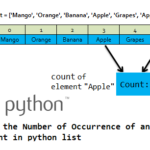The strpos() function in PostgreSQL is used to find the location of a substring within a string. It returns the position of the first occurrence of the substring. If the substring is not found, it returns 0.
Syntax – strpos() function in PostgreSQL
strpos(string text, substring text)
- string: The string in which to search.
- substring: The substring to search for.
Examples – strpos() function in PostgreSQL
1.Find Substring Position:
SELECT strpos('PostgreSQL Expert','Expert');
Explanation: The substring ‘Expert’ starts at the 12th position in the string ‘ PostgreSQL Expert’.
Output:
2. Substring Not Found
SELECT strpos('PostgreSQL Expert','wizard');
Explanation: The substring ‘wizard’ is not found in the string ‘ PostgreSQL Expert’. If the substring is not found it will return Zero , so the output will be
Output:
3. Case Sensitivity
SELECT strpos('PostgreSQL Expert','expert');
Explanation: The strpos() function is case-sensitive, so ‘expert’ is not found in the string ‘ PostgreSQL Expert’. If the substring is not found it will return Zero , so the output will be
Output:
Using strpos() on a Column in PostgreSQL:
We can use the strpos() function on a column in a table to find the position of a substring within each row’s value.
We will be using “text” table
SELECT *, strpos(content, 'PostgreSQL') AS position_of_postgresql FROM Texts;
Explanation
- The query returns the id, content, and the position of the substring ‘PostgreSQL’ in each content.
- If the substring ‘PostgreSQL’ is not found, it returns 0.
Output:
Using strpos() function to filter rows based on the presence of string /substring:
You can use the strpos() function to filter rows based on the presence or absence of a string or substring.
SELECT * FROM Texts WHERE strpos(content, 'PostgreSQL') > 0;
- This query selects rows where the substring ‘PostgreSQL’ is found in the content column.
Output:










